When the amount of equity in your M1 Finance trading account drops below a predetermined threshold, you will receive a M1 Finance margin call. If this occurs, you will need to add additional funds to your M1 Finance account in order to compensate for any potential losses.
A stop order is one of the safeguards that can be implemented to prevent M1 Finance margin calls from occurring. Not only inexperienced traders but also more seasoned M1 Finance investors can benefit greatly from the utilisation of stop orders because they function similarly to an insurance policy.
If your M1 Finance account's margin falls below this figure, the M1 Finance may issue a margin call, in which case they will request that you bring the account back up to a level where it is above the minimum required margin for the account.
The M1 Finance margin call occurs when an investment has a M1 Finance margin balance that is lower than the required minimum by the broker.
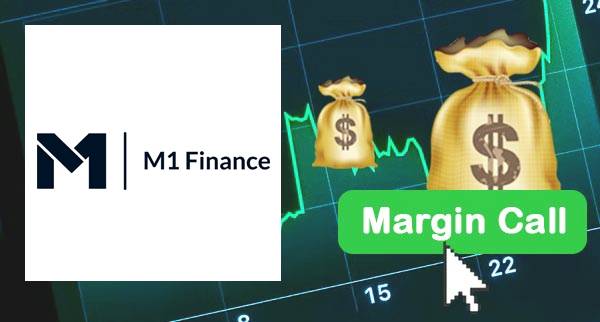
When an investor's M1 Finance margin account falls below a predetermined threshold due to losses sustained by an M1 Finance investment, the investor is subject to what is known as a M1 Finance margin call. When a M1 Finance margin call occurs, the brokerage will request that additional funds or securities be added to the margin account in order to get back above the level that is known as the M1 Finance maintenance margin.
When using a M1 Finance margin account, both the investor and the M1 Finance broker begin their investment in the securities with the same amount of money. It is only natural that this would shift up and down in tandem with the M1 Finance traded asset price. The maintenance margin is the minimum amount of an investor's own money that must be held in the M1 Finance account at any given time. It is expressed as a percentage.
When you have a margin call on your M1 Finance brokerage account, the sooner you pay the required amount to M1 Finance, the better off you will be. Brokers like M1 Finance have no incentive to assist you in placing money back into the M1 Finance account or to give you more time to locate the funds, so they may not do either of those things. Their own bottom line serves as an incentive for M1 Finance, which is why margin calls are made by M1 Finance in the first place.
A margin call is issued to the respective M1 Finance investor by the broker when the balance in the investor's M1 Finance margin account falls below the required minimum margin. A M1 Finance margin call is a demand made by the broker to a M1 Finance customer that requires the customer to make additional deposits into their M1 Finance account or sell some of the securities in their M1 Finance portfolio in order to meet the demand.
In the event that the client does not respond to the M1 Finance margin call, M1 Finance may sell some of the customer's securities in order to bring the M1 Finance account back up to the minimum acceptable level.
There is no guarantee that a customer will receive a margin call from M1 Finance, which would require them to add more money to their M1 Finance account. M1 Finance might instead sell some of the customer's securities in order to bring the M1 Finance account back up to the maintenance margin without first notifying the customer.
When you buy on margin, you use the money from your M1 Finance broker to purchase a greater quantity of securities than you have available funds to purchase. Make sure you have a solid understanding of what it means to buy on margin with M1 Finance, as well as what you need to do if you do not have the financial means to do so, before you go ahead and open a M1 Finance margin account.
The difference between the value of the assets held by the M1 Finance brokerage and the amount of money borrowed from the M1 Finance broker is what is referred to as the margin account. Typically, M1 Finance will determine a minimum required value for a fixed amount that the portfolio must hold. A M1 Finance margin call is issued by the brokerage firm whenever the equity drops below the M1 Finance maintenance margin.
If a trader does not keep the required M1 Finance minimum balance in their M1 Finance trading account or the required maintenance margin, M1 Finance will sell their position. Brokerage firms like M1 Finance will sometimes employ this strategy in order to protect themselves from the defaults of their customers. In order to fulfil the requirement for collateral, the trader is required to place a cash deposit with M1 Finance equal to the minimum required amount.
A message that alerts M1 Finance traders to the necessity of keeping the required M1 Finance minimum balance, also referred to as maintenance margin, in their M1 Finance accounts is called a margin call.
Check out the margin level on your M1 Finance trading platform; this will tell you how much money you are shelling out to M1 Finance in order to safeguard yourself against the possibility of incurring losses. Every M1 Finance trader who uses margin has what's called a margin close out level, which indicates how much money the trader has lost or gained as a result of using M1 Finance margin.
If a M1 Finance investor borrows money from their brokerage to purchase leveraged stocks, Forex, commodities or other financial instrument, there is a possibility that their M1 Finance margin account will be subject to a margin call. It is not necessary to make use of any M1 Finance borrowed funds in order to have a margin account; however, investors who do make use of M1 Finance borrowed funds will be subject to interest payments on those M1 Finance margin funds.
When the value of an investor's M1 Finance account drops below the minimum maintenance margin required by th M1 Finance firm, or when a margin call occurs, the investor will receive a M1 Finance margin call. In situations involving calls for M1 Finance margin, the ratio of investor equity to the market value of the securities held in the M1 Finance account is the most important consideration.
Multiple entities, including the financial regulators and brokerages like M1 Finance, are responsible for determining the minimum required for M1 Finance maintenance margins. There is also a possibility that M1 Finance will require higher house maintenance margins. Depending on the requirements of the traded industry on M1 Finance and the exchange, individual brokerages like M1 Finance may typically establish higher minimums, ranging from 10 percent to 40 percent.
House minimums are subject to the brokerage's discretion and may be adjusted at any time without prior notification. Minimums can also change depending on the underlying stock. For example, if a specific stock suddenly becomes more volatile, brokerages may respond by rapidly increasing their maintenance margin limits.
The majority of brokerages will give investors between four and five business days to complete any necessary maintenance tasks. An exchange call will be made in the event that the account falls below the minimum required by the exchange.
The simplest way to stay away from a margin call is to simply not open a margin account in the first place. When things go wrong, buying on margin is one of the riskiest ways to invest specifically because it magnifies losses. This makes buying on margin one of the riskiest ways to invest. Therefore, if you want to avoid the difficulties of a margin call, the easiest way to do so is to refrain from opening any margin accounts.
But there are ways that you can lessen the impact of the risk as much as you possibly can. In the event that you are confronted with a margin call, ensure that you have money and/or other assets that can be easily liquidated saved away.
Choosing investments that are inherently less risky is yet another strategy that can be utilised in an effort to reduce the likelihood of being subjected to a margin call. Due to the fact that they are much less volatile, bonds do not have nearly the same potential for growth as stocks do. In a market decline, they are also less likely to experience a decline of the same magnitude as stocks can.
Avoiding a M1 Finance margin call can be accomplished in the most straightforward manner by avoiding the use of M1 Finance borrowed money to purchase financial instruments like stocks, currencies, crypto, commodities and indices on M1 Finance. Limiting M1 Finance purchases to only be made with funded cash that is already in the M1 Finance account. Investors are not required to use the M1 Finance account in a margin trading capacity, despite the fact that many brokers like M1 Finance will want to set up new accounts as margin trading accounts right from the start.
There is no requirement for M1 Finance to permit an investor to use borrowed funds for up to fifty percent of the total M1 Finance transaction amount; however, the M1 Finance may choose to do so. An M1 Finance investor would still receive some of the benefits of margin (extra buying power), but they would do so with a M1 Finance larger equity buffer if they used M1 Finance borrowed funds to the extent of 10 percent.
A potential reduction in the risk of M1 Finance margin calls can also be achieved by avoiding volatile securities on the M1 Finance trading platform. It is also possible to reduce risk by holding M1 Finance securities with inverse correlations. However, there is a risk associated with this strategy, and that risk is that the correlations of assets that are uncorrelated or inversely-correlated can change rapidly during times of significant market volatility with M1 Finance.
The purpose of M1 Finance margin calls is to protect the interests of the M1 Finance brokerage as well as the trader. Waiting until a M1 Finance margin call to act of negative or low M1 Finance trading balances is not good. M1 Finance investors should keep a close eye on their respective accounts.
Brokerages like M1 Finance have the authority to issue margin calls, also known as M1 Finance demands for immediate satisfaction, and M1 Finance may choose to do so during times of heightened market volatility. When the amount of equity in an investor's M1 Finance account drops below a certain minimum threshold, the majority of brokerages like M1 Finance are required to notify the investor of a margin call before trading begins each morning.
On the US stock market, an investor may use margin trading to buy and sell options; however, the investor must have available cash to serve as collateral. In the event that the investor's position moves against them, they may receive a margin call requesting additional cash or securities so that the equity ratio can be restored.
The failure of a broker to meet a margin call can result in the broker's business being liquidated. When a brokerage firm exercises its right to sell securities held in a margin account in order to satisfy a margin call, this practise is referred to as "liquidation." However, this is not the same as missing a margin call because there was not enough money in the account.
The M1 Finance margin call equals the difference between what is required and what you currently have in your M1 Finance balance. If this occurs, you will be required to make the necessary deposits to M1 Finance in order to continue trading using your margin with M1 Finance.
Trading on margin can make you look like a genius if you make profits, but if you suffer substantial losses, it can be disastrous for your financial situation. A margin call is a time bomb that could explode at any moment, and it's unlikely that your broker will grant you an extension. In the event that this takes place to you, you are going to want to sell those stocks as soon as possible.
If you have a margin account of $250,000 and someone fails to make their margin call, they could suddenly be responsible for six figures worth of debt. When an investor is unlucky enough to have their margin call missed, that is just the beginning of their string of losses. The losses that you incurred during this time period may then turn into debt that you are responsible for paying.
If you are unable to repay the debt you owe to a brokerage, this can have extremely severe repercussions. It is possible that an investor who has multiple accounts at that brokerage will be required to sell the assets that are held in those accounts. It's possible that you'll have to liquidate stocks and other securities held at other brokerages in order to pay off the debt.
Your debt is going to be reported to the various credit agencies by the brokerage, and as a result, your credit score is going to take a significant hit. If you have a low credit score, it may be difficult to get approved for loans or open a margin account in the future, even if you decide you want to try doing either of those things.
And even if all of that damage is done to you, there is still the distinct possibility that a brokerage will file a lawsuit against you, which will consume a significant amount of time and money.
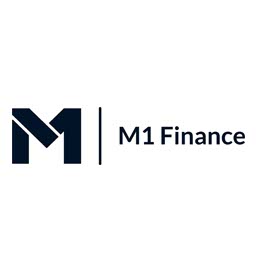
M1 Finance CFD stocks:
M1 Finance US CFD stocks: No
M1 Finance UK CFD stocks: No
M1 Finance CFD Indices:
M1 Finance Commodity CFD:
M1 Finance ETF CFD:
M1 Finance Forex CFD: No
🤴 M1 Finance is Used By: 10,000
⚡ M1 Finance is Regulated by: Financial Industry Regulatory Authority (FINRA), Securities Investor Protection Corporation (SIPC)
💵 What You Can Trade with M1 Finance: Forex, Commodities, Indices, Stocks, Crypto, Futures
💵 Instruments Available with M1 Finance: 163
📈 M1 Finance Inactivity Fees:
💰 M1 Finance Withdrawal Fees: varies
💰 M1 Finance Payment Methods: Credit cards,
💰 M1 Finance Account Base Currencies:
M1 Finance Risk warning : Your capital is at risk

IC Markets CFD stocks: 110
IC Markets US CFD stocks: Yes
IC Markets UK CFD stocks: Yes
IC Markets CFD Indices: 25
IC Markets Commodity CFD: 20
IC Markets ETF CFD: 30
IC Markets Forex CFD: Yes
🤴 IC Markets is Used By: 180,000
⚡ IC Markets is Regulated by: Australian Securities and Investments Commission (ASIC), Financial Services Authority (FSA), Cyprus Securities and Exchange Commission (CySEC)
💵 What You Can Trade with IC Markets: Forex, Majors, Energies, Metals, Agriculturals,
💵 Instruments Available with IC Markets: 232
📈 IC Markets Inactivity Fees: No
💰 IC Markets Withdrawal Fees: No
💰 IC Markets Payment Methods: Credit Cards, VISA, MasterCard, Debit Cards, Visa, MasterCard, Bank Transfer, PayPal, Neteller, Neteller VIP, Skrill, Poli, Cheque, BPAY, UnionPay, FasaPay, QIWI, RapidPay, Klarna, Electronic wallets (eWallets), Broker to Brokers, Thai Internet Banking, Vietnamese Internet Banking,
💰 IC Markets Account Base Currencies: USD, GBP, EUR, CHF, JPY, SGD, AUD, CAD, HKD, NZD
IC Markets Risk warning : Losses can exceed deposits

Roboforex CFD stocks: 8,400
Roboforex US CFD stocks: Yes
Roboforex UK CFD stocks: Yes
Roboforex CFD Indices: 30
Roboforex Commodity CFD: 20
Roboforex ETF CFD: 50
Roboforex Forex CFD: Yes
🤴 Roboforex is Used By: 10,000
⚡ Roboforex is Regulated by: RoboForex Lid is regulated by Belize FSC, License No. 000138/7, reg. number 000001272
💵 What You Can Trade with Roboforex: Forex, Minors, Majors, Exotics, Indices, Metals,
💵 Instruments Available with Roboforex: 100
📈 Roboforex Inactivity Fees: No
💰 Roboforex Withdrawal Fees: Yes
💰 Roboforex Payment Methods: Credit cards, VISA, MasterCard, JCB, Debit cards, Bank Transfer, Electronic wallets (eWallets), Neteller, Skrill, Perfect Money, AdvCash, BPAY, China UnionPay, FasaPay, CashU, WeChat Pay, ecoPayZ, AstroPay, Sofort, Giropay, Poli, Wepay, iDEAL, Payoneer,
💰 Roboforex Account Base Currencies: USD, EUR, XAU
Roboforex Risk warning : Losses can exceed deposits
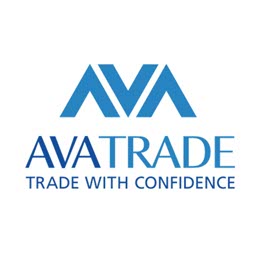
AvaTrade CFD stocks: 625
AvaTrade US CFD stocks: Yes
AvaTrade UK CFD stocks: Yes
AvaTrade CFD Indices: 32
AvaTrade Commodity CFD: 27
AvaTrade ETF CFD: 59
AvaTrade Forex CFD: Yes
🤴 AvaTrade is Used By: 200,000
⚡ AvaTrade is Regulated by: Central Bank of Ireland, Australian Securities and Investments Commission (ASIC), Financial Services Authority (FSA), South African Financial Sector Conduct Authority (FSCA), Financial Stability Board (FSB), Abu Dhabi Global Markets (ADGM), Financial Regulatory Services Authority (FRSA), British Virgin Islands Financial Services Commission (BVI)
💵 What You Can Trade with AvaTrade: Forex, Minors, Cryptocurrencies, Majors, Exotics, Indices, UK Stocks, US Stocks, Energies, Metals, Agriculturals, ETFs, IPO, Bonds,
💵 Instruments Available with AvaTrade: 1000
📈 AvaTrade Inactivity Fees: No
💰 AvaTrade Withdrawal Fees: No
💰 AvaTrade Payment Methods: Credit cards, VISA, MasterCard, Bank Transfer, Electronic wallets (eWallets), PayPal, Neteller, WebMoney, Payoneer,
💰 AvaTrade Account Base Currencies: USD, GBP, EUR, JPY, AUD
AvaTrade Risk warning : 71% of retail CFD accounts lose money
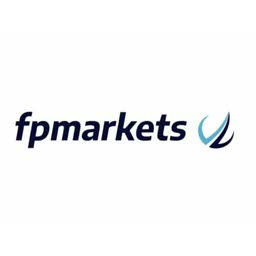
FP Markets CFD stocks: 9,000
FP Markets US CFD stocks: Yes
FP Markets UK CFD stocks: Yes
FP Markets CFD Indices: 14
FP Markets Commodity CFD: 6
FP Markets ETF CFD: 250
FP Markets Forex CFD: Yes
🤴 FP Markets is Used By: 10,000
⚡ FP Markets is Regulated by: Australian Securities and Investments Commission (ASIC), Cyprus Securities and Exchange Commission (CySEC), Financial Services Authority (St. Vincent and the Grenadines)
💵 What You Can Trade with FP Markets: Forex, Minors, Majors, Exotics, Indices, Metals,
💵 Instruments Available with FP Markets: 100
📈 FP Markets Inactivity Fees: No
💰 FP Markets Withdrawal Fees: No
💰 FP Markets Payment Methods: Credit cards, VISA, MasterCard, Debit cards, Bank Transfer, Electronic wallets (eWallets), Neteller, BPAY, POLi, PayPal, Neteller, Skrill, PayTrust, NganLuong VN, Fasapay, Broker to Broker, OnlinePay China, Directa24, Klarna, PayTrust88, Payoneer,
💰 FP Markets Account Base Currencies: USD, GBP, EUR, CHF, JPY, SGD, AUD, CAD, HKD, NZD
FP Markets Risk warning : Losses can exceed deposits
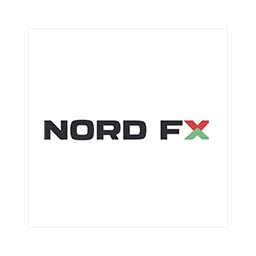
NordFX CFD stocks: 65
NordFX US CFD stocks: No
NordFX UK CFD stocks: No
NordFX CFD Indices:
NordFX Commodity CFD: 20
NordFX ETF CFD: 50
NordFX Forex CFD: Yes
🤴 NordFX is Used By: 10,000
⚡ NordFX is Regulated by: Cyprus Securities and Exchange Commission (CySEC), License No: 209/13
💵 What You Can Trade with NordFX: Forex, Majors, Metals,
💵 Instruments Available with NordFX: 50
📈 NordFX Inactivity Fees: No
💰 NordFX Withdrawal Fees: No
💰 NordFX Payment Methods: Bank Transfer, Neteller, PerfectMoney, WebMoney, FasaPay, CashU, Payza, QIWI,
💰 NordFX Account Base Currencies: USD, EUR
NordFX Risk warning : Losses can exceed deposits
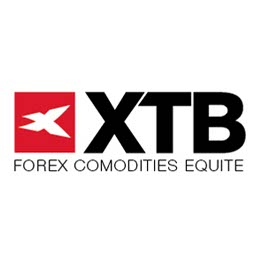
XTB CFD stocks: 1,800
XTB US CFD stocks: Yes
XTB UK CFD stocks: Yes
XTB CFD Indices: 42
XTB Commodity CFD: 22
XTB ETF CFD: 114
XTB Forex CFD: Yes
🤴 XTB is Used By: 250,000
⚡ XTB is Regulated by: Financial Conduct Authority (FCA), FCA number FRN 522157, Cyprus Securities and Exchange Commission (CySEC), CySEC Licence Number: 169/12, Comision Nacional del Mercado de Valores, Komisja Nadzoru Finansowego, Belize International Financial Services Commission (IFSC) under license number IFSC/60/413/TS/19, Polish Securities and Exchange Commission (KPWiG), Dubai Financial Services Authority (DFSA), Dubai International Financial Center (DIFC),Financial Sector Conduct Authority (FSCA), XTB AFRICA (PTY) LTD licensed to operate in South Africa
💵 What You Can Trade with XTB: Forex, Minors, Cryptocurrencies, Majors, Exotics, Indices, UK Stocks, US Stocks, Pennystocks, Energies, Metals, Agriculturals, ETFs,
💵 Instruments Available with XTB: 4000
📈 XTB Inactivity Fees: Yes
💰 XTB Withdrawal Fees: No
💰 XTB Payment Methods: Credit cards, MasterCard, Maestro, Visa, Debit cards, Bank Transfer, Electronic wallets (eWallets), PayPal, Neteller, Skrill, Poli, Paysafe, Payoneer,
💰 XTB Account Base Currencies: USD, GBP, EUR
XTB Risk warning : 76% - 83% of retail investor accounts lose money when trading CFDs with this provider. You should consider whether you understand how CFDs work and whether you can afford to take the high risk of losing your money.

Pepperstone CFD stocks: 253
Pepperstone US CFD stocks: No
Pepperstone UK CFD stocks: No
Pepperstone CFD Indices: 14
Pepperstone Commodity CFD: 16
Pepperstone ETF CFD: 250
Pepperstone Forex CFD: Yes
🤴 Pepperstone is Used By: 89,000
⚡ Pepperstone is Regulated by: Financial Conduct Authority (FCA), Australian Securities and Investments Commission (ASIC), Cyprus Securities and Exchange Commission (CySEC), Federal Financial Supervisory Authority (BaFin), Dubai Financial Services Authority (DFSA), Capital Markets Authority of Kenya (CMA), Pepperstone Markets Limited is incorporated in The Bahamas (number 177174 B), Licensed by the Securities Commission of the Bahamas (SCB) number SIA-F217
💵 What You Can Trade with Pepperstone: Forex, Minors, Cryptocurrencies, Majors, Exotics, Indices, Energies, Metals,
💵 Instruments Available with Pepperstone: 100
📈 Pepperstone Inactivity Fees: Yes
💰 Pepperstone Withdrawal Fees: No
💰 Pepperstone Payment Methods: Credit cards, VISA, MasterCard, Debit cards, Bank Transfer, Electronic wallets (eWallets), PayPal, Neteller, BPAY, POLi, UnionPay, FasaPay, QIWI, Payoneer,
💰 Pepperstone Account Base Currencies: USD, GBP, EUR, CHF, JPY, SGD, AUD, CAD, NZD, HKD
Pepperstone Risk warning : CFDs are complex instruments and come with a high risk of losing money rapidly due to leverage. Between 74-89 % of retail investor accounts lose money when trading CFDs. You should consider whether you understand how CFDs work and whether you can afford to take the high risk of losing your money
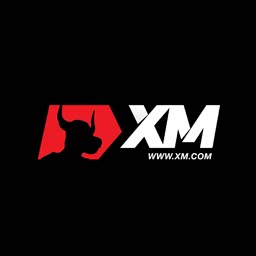
XM CFD stocks: 1,240
XM US CFD stocks: Yes
XM UK CFD stocks: Yes
XM CFD Indices: 28
XM Commodity CFD: 15
XM ETF CFD: 250
XM Forex CFD: Yes
🤴 XM is Used By: 10,000,000
⚡ XM is Regulated by: Financial Services Commission (FSC), Cyprus Securities and Exchange Commission (CySEC), Australian Securities and Investments Commission (ASIC)
💵 What You Can Trade with XM: Forex, Stock CFDs, Commodity CFDs, Minors, Majors, Exotics, Equity Indices CFD, Energies CFD, Precious Metals
💵 Instruments Available with XM: 1000
📈 XM Inactivity Fees: Yes
💰 XM Withdrawal Fees: No
💰 XM Payment Methods: Credit cards, Debit cards, Bank Transfer, Electronic wallets (eWallets), Moneta, ABAQOOS, PRZELEWY24, Neteller, PerfectMoney, WebMoney, UnionPay, FasaPay, CashU, Payza, QIWI, SOFORT, Giropay, Payoneer, Skrill,
💰 XM Account Base Currencies:
XM Risk warning : CFDs are complex instruments and come with a high risk of losing money rapidly due to leverage. 77.74% of retail investor
accounts lose money when trading CFDs with this provider. You should consider whether you understand how CFDs work and whether you can afford
to take the high risk of losing your money.

eToro CFD stocks: 2,000
eToro US CFD stocks: Yes
eToro UK CFD stocks: Yes
eToro CFD Indices: 30
eToro Commodity CFD: 31
eToro ETF CFD: 65
eToro Forex CFD: Yes
🤴 eToro is Used By: 20,000,000
⚡ eToro is Regulated by: Financial Conduct Authority (FCA), Cyprus Securities and Exchange Commission (CySEC), Markets In Financial Instruments Directive (MiFID), Australian Securities and Investments Commission (ASIC)
💵 What You Can Trade with eToro: Forex, Minors, Cryptocurrencies, Majors, Exotics, Indices, UK Stocks, US Stocks, Energies, Metals, Agriculturals, ETFs,
💵 Instruments Available with eToro: 2000
📈 eToro Inactivity Fees: Yes
💰 eToro Withdrawal Fees: Yes
💰 eToro Payment Methods: Credit cards, VISA, MasterCard, Maestro, Debit Cards, Bank Transfer, PayPal, Neteller, Skrill, WebMoney, Giropay, eWallets,
💰 eToro Account Base Currencies: USD
eToro Risk warning : 51% of retail investor accounts lose money when trading CFDs with this provider.
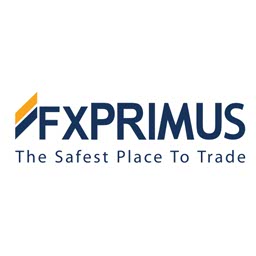
FXPrimus CFD stocks: 50
FXPrimus US CFD stocks: Yes
FXPrimus UK CFD stocks: Yes
FXPrimus CFD Indices:
FXPrimus Commodity CFD: 20
FXPrimus ETF CFD: 50
FXPrimus Forex CFD: Yes
🤴 FXPrimus is Used By: 10,000
⚡ FXPrimus is Regulated by: Cyprus Securities and Exchange Commission (CySEC), Markets In Financial Instruments Directive (MiFID), Vanuatu Financial Services Commission (VFSC)
💵 What You Can Trade with FXPrimus: Forex, Minors, Majors, Exotics, Indices, UK Stocks, US Stocks, Energies, Metals,
💵 Instruments Available with FXPrimus: 130
📈 FXPrimus Inactivity Fees: No
💰 FXPrimus Withdrawal Fees: Varies
💰 FXPrimus Payment Methods: Credit cards, VISA, MasterCard, Debit cards, Bank Transfer, Electronic wallets (eWallets), Neteller, Skrill, Payoneer, SafeCharge, TrustPay, EmerchantPay, Bitcoin, UnionPay, FasaPay, Giropay,
💰 FXPrimus Account Base Currencies: USD, GBP, EUR, SGD, PLN
FXPrimus Risk warning : Losses can exceed deposits

easyMarkets CFD stocks: 50
easyMarkets US CFD stocks: Yes
easyMarkets UK CFD stocks: Yes
easyMarkets CFD Indices:
easyMarkets Commodity CFD: 20
easyMarkets ETF CFD: 50
easyMarkets Forex CFD: Yes
🤴 easyMarkets is Used By: 142,500
⚡ easyMarkets is Regulated by: Cyprus Securities and Exchange Commission (CySEC), Australian Securities and Investments Commission (ASIC), Financial Services Authority (FSA), British Virgin Islands Financial Services Commission (BVI)
💵 What You Can Trade with easyMarkets: Forex, Minors, Cryptocurrencies, Majors, Exotics, Indices, Energies, Metals, Agriculturals, Options,
💵 Instruments Available with easyMarkets: 200
📈 easyMarkets Inactivity Fees: No
💰 easyMarkets Withdrawal Fees: No
💰 easyMarkets Payment Methods: Credit cards, MasterCard, Maestro, American Express, JCB, Astropay, Debit cards, Bank Transfer, SOFORT, GiroPay, iDeal, Bpay, Electronic wallets (eWallets), Skrill, Neteller, WebMoney, UnionPay, WeChatPay, FasaPay, STICPAY,
💰 easyMarkets Account Base Currencies: USD, GBP, EUR, CHF, JPY, SGD, AUD, CAD, CNY, CZK, HKD, ILS, MXN, NOK, NZD, PLN, SEK, TRY, ZAR
easyMarkets Risk warning : Your capital is at risk
If M1 Finance isn’t quite what you are looking for you can check out some of the best M1 Finance alternatives below.
If you would like to see M1 Finance compared against some of the best M1 Finance Margin Call alternatives available right now you can do so by clicking on the links below.